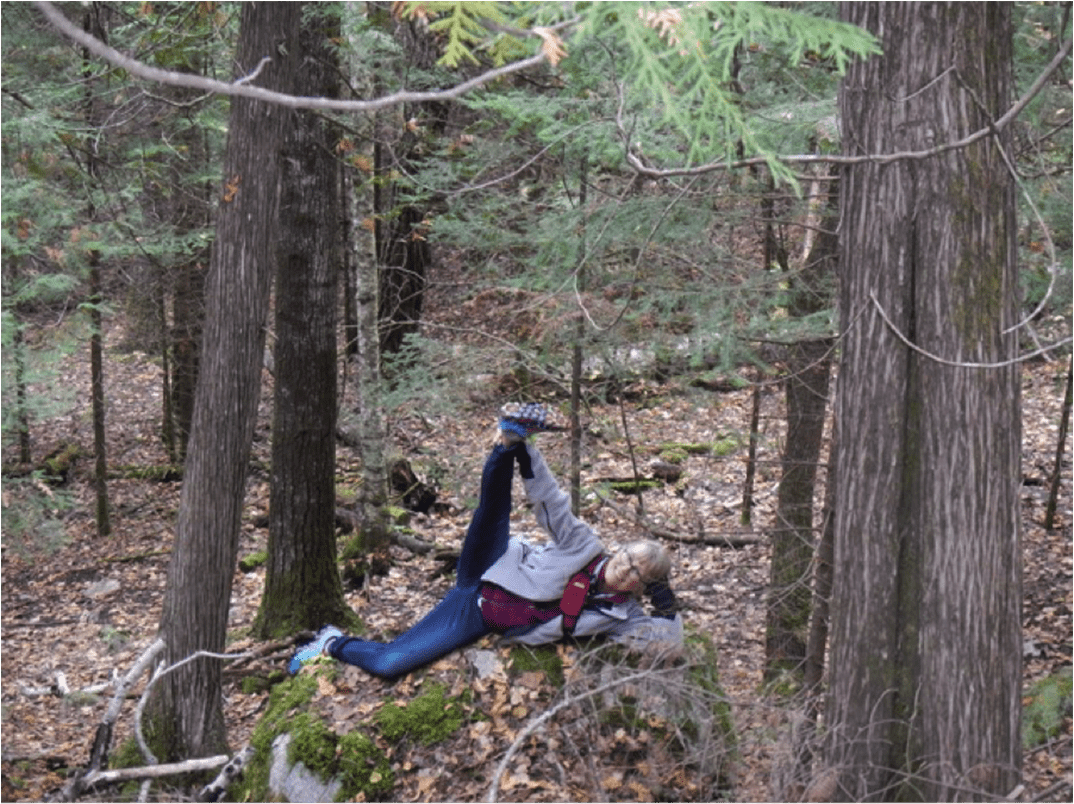In her latest book, Yoga for Emotional Balance: Simple Practices to Help Relieve Anxiety and Depression, psychologist Bo Forbes emphasizes the following five healing practices for creating lasting change and health:
Balance the nervous system. Our nervous system filters all our emotional experiences. In order to not over stress (anxiety) or under stimulate (lethargy; depression) the nervous system, we need to learn how to respond calmly during intense emotional situations. Given the almost epidemic growth of anxiety (chronic or intense worry) and depression (long-term or acute sadness) around the world, our innate ability for relaxation appears to be significantly under utilized.
Fortunately, relaxing our physical body and quieting our emotional reactivity emerges in a restorative yoga practice where props are used to support each pose. Muscular effort and tension is reduced while comfort and relaxation are induced. As a dedicated yoga practitioner who healed myself from anxiety and depression, the restorative practice is still a favourite experience.
Regulate the breath. If we are unable to relax our bodies and quiet our minds, then very likely we are rapid, shallow, mouth breathers. Breathing in such a manner encourages hyperventilation and over stimulates our nervous system. Slow, deep breathing through the nostrils elongates our exhalation, which lowers our heart rate and calms our nervous system. Furthermore, deep gentle nostril breathing during emotionally intense situations helps us to stay in a place of Centred Silence where we are able to be aware and listen with patience and compassion.
My meditation practice is instrumental in providing me with the necessary centred silence from which I can hear my intuition and make wiser choices in my relationships with others and for my overall health and well-being.
Cultivate direct experience. Direct experience implies living through present moment awareness. To do so, we are not recycling the past through regretting our behaviour, which can lead us down the pathway to depression. Neither are we only living in the future due to worrying about the unknown, which is the root of anxiety. Instead, we are aware of and listening to the sensations emitted by our bodies. Our bodies are our best early-warning detection systems willingly and wisely alerting us to dangers or joys long before our minds have figured out what is happening.
Paying attention to my body’s sensations enabled me to heal both emotional and physical injuries. After a medical diagnosis of torn meniscus in my knees and the suggested surgical treatment, I decided instead to test my yoga practice’s ability to alleviate my knee pain. For five years, I gave up jogging and committed to increasing the space and flexibility in my joints, particularly hips and ankles. Happily, I am back to jogging and sitting in Padmasana (lotus pose) with pain-free knees. Not only was I able to eliminate my health problem, I also increased my overall fitness and wellness.
Quiet the mind. A racing mind cannot hold attention on the present moment. In our initial attempts to relax the body and still the mind through meditation and mindfulness practices, we often discover just how incessantly active the mind is. Its monkey-mind chatter can and does serve to distract us from staying present to each emerging moment.
Meditation is not a way of making your mind quiet. It is a way of entering
into the quiet that is already there – buried under the 50,000 thoughts the
average person thinks every day. Deepak Chopra
Because we have spent a good deal of our lives listening to our monkey mind rather than resting within the abiding quiet, we are unfamiliar with this inner space of centred silence where truth and wisdom dwell. The more I rebuild my capacity to enter this silence, the gentler, wiser and more joyful I am. Just as exciting is the increased energy and capacity for creative production. There is a direct relationship between my meditation practice and my ability to write and publish 10 books in 7 years.
Change your personal narratives. I have a favourite guided visualization I teach to beginning meditators. It goes like this: Imagine there are three buckets beside you each labeled “Positive”, “Negative” and “Neutral.” Over the next 20 minutes, place all your negative thoughts in the Negative bucket, all your positive thoughts in the Positive bucket and all your neutral thoughts in the Neutral bucket. At the end of the visualization, I ask, “Which bucket is the fullest?” If you guessed the Negative bucket, you are right. Most people, once they analyze their thoughts, realize the majority of their thinking is negative. And like the wonderful First Nation teaching of the Two Wolves, what we focus on we feed and thus increase in our lives.
I am a huge proponent of the power of positive thinking and use affirmations to physically form new positive neural pathways in my brain. Neuroscience has proven that when we stop repeating negative thought patterns, those grooves in our brain eventually disappear. IMO, negative thinking, such as worry, anxiety, anger, hatred, envy, jealousy, regret, etc., is an utter waste of time and energy. Have you noticed that those who focus on negativity are often unhappy and unhealthy? Be aware that negative thoughts inhibit intuition, creativity, peace, love, joy and overall well-being. So, choose to be powerful in your life and in the world with positive thoughts. Change your story, and you will change your life.
For more on whole being change, click here.





